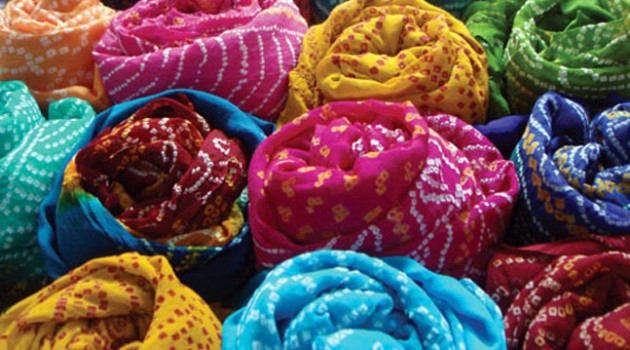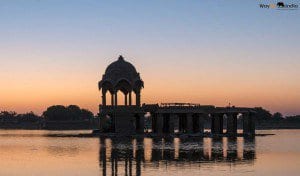BEST HONEYMOON PLACES: IN INDIA
Marriage, a divine relation that binds
not just two families or individuals, but also two souls with an eternal bond
for a lifetime! With the knot being tied, life just takes a new turn towards
love, bliss and romance.
Such an auspicious bond in life, why not
and add some more strokes of romance and affection with a pleasant honeymoon
trip? But then…that one question strikes the mind: where to go?
Well, no more worries in planning a
dreamy honeymoon trip! Here is a list of 50 best honeymoon destinations in
India; just pick up the most alluring destination and let love do the rest for
you…
When it
comes to plan a honeymoon trip to Agra
Udaipur – a royal ride to the Venice of the East
Well, a honeymoon trip to the ‘City of Lakes ’ or the ‘Venice
Jaisalmer – Let the hearts fondle each other at the heart of the
Thar Desert
Honeymoon
in Jaisalmer is truly a hearty affair! Located right at the heart of the great
Thar Desert, honeymoon in the ‘Golden City’ or Jaisalmer is all about art and
crafts, culture and tradition, the warmth of each others’ company and promises
for life.
Pushkar – where Love and devotion completes each other
Love without devotion is just
like a temple without a God! The holy lands of Pushkar, with all its rustic
charm and sacredness, will surely urge both of you to pour your hearts and
devote all your life for the happiness of each other.
Rishikesh – love and adventure on the rocks
If living life on the
edge excites both you and your other half, no other destinations in India
Kovalam – where Love gets mixed with
relaxation
Get swayed away in each
other’s arms…add a little amount of relaxation to your honeymoon trip and enjoy
each other’s company in the most romantic way!
Goa – Love in the air
Do not let pass a single
moment without love and romance! Make her feel your tenderly emotions, give her
all the reasons to shower all her love on you and let the alluring breezes do
the talk for you!
Andaman & Nicobar
Islands – get infected with the Love-bug
Let the love-bugs in both of you caress each other in the
most adorable ways! As both of you get bitten by these bugs, let the silver
sands and azure waters of Andaman cure both of you with a sting of romance and
passion.
Alleppey – at times, silence talks more
volume of Love
Words are
not always to make each other feel the love and romance! Plan your honeymoon
trip to the silent backwaters in Alleppey and allow silence do the talking for
you!
Pondicherry
Witness love
growing deep in the most passionate ways as the time flows! Add a pinch of
French essence to your honeymoon and make every moment of your honeymoon
memorable in the surreal locales of Pondicherry
Tarkarli -where every moment makes you fall in love with
each other
Begin the new phase of your life
with a memorable honeymoon trip to the romantic beaches of Tarkarli and it’s
resort. It is in this quaint hamlet, you will find all the reasons to fall in
love with each other once again!
Darjeeling
As you witness the sun
rising over the horizon from the Tiger Hills, promise a bond that will make
both of you love each other even more than yesterday! Caress and pamper the
honeymoon trip with stunning views of the Himalayas, Mt Everest and the
enthralling Kanchenjunga
Peak
Srinagar
Take a shikara ride in
the stunning Dal Lake Srinagar
Jodhpur – Love and feel Loved in the
Thar Desert
Step into the wonderful
bond of marriage with a candid honeymoon trip to the ‘Blue
City ’ Jodhpur Jodhpur
Ranthambore – The most adventurous
jungle stay
Unlike others, if you and
your partner are inclined towards the nature or the fascinating wildlife, you
must plan your honeymoon in Ranthambore
National Park
Coorg – romance in the Scotland of India
Nothing in this world can
buy the happiness of being with your beloved one! Add more colours to this
divine relation with a honeymoon trip to the evergreen locales and scintillating hills of Coorg.
Also known as the ‘Scotland
of India
Gulmarg – the canvas of nature awaits the love strokes
The snowy meadows of
Gulmarg await you to bring all your romantic emotions to life! The alluring
charm of the snow-clad hills and valleys of this hill station outlooks any
other honeymoon destinations in the country.
Kumarakom – silent, yet romantic
After all
the festive celebrations of a big-fat wedding, both of you really deserve to
relax away from everyone! Sail through the silent backwaters of Kumarakom,
relax in a houseboat and blend your honeymoon with plenitude of relaxing
moments along with the tenderness of love and romance!
Ooty – nature is the best host to start
a new life
Embraced by the fascinating beauty of
the Nilgiri Hills and adorned with pleasant hilly climate and stunning beauty,
Ooty in undoubtedly one of the best honeymoon destinations in the country.
Quaint, yet mesmerising, honeymoon in Ooty is all about cuddling each other in
the lap of nature!
Shimla – add purity and wholeness to the
new beginning
White is
not just a colour! It also signifies the amount of purity, wholeness and
completion. Shower the new beginning in your life with the essence of the white
snows, add purity, complete each other with love and affection and make it for
the most romantic moments of your life!
Manali – fall in Love with the snows
Have a tryst with the
snow-capped peaks, romance the untouched beauty of the nature and fall in love
with each other amidst the enchanting greeneries. To make your honeymoon more
eventful, take your better half for a skiing, sightseeing and romantic tour in
Manali.
Khandala – let the nature paint your
journey of love
Every moment in Khandala adds a new
colour to your honeymoon trip. A pictorial hill station in Maharashtra ;
around 100km from Pune, the scenic beauty, pleasant climate, many different
viewpoints and the solitude in Khandala makes it for an eventful honeymoon trip!
























